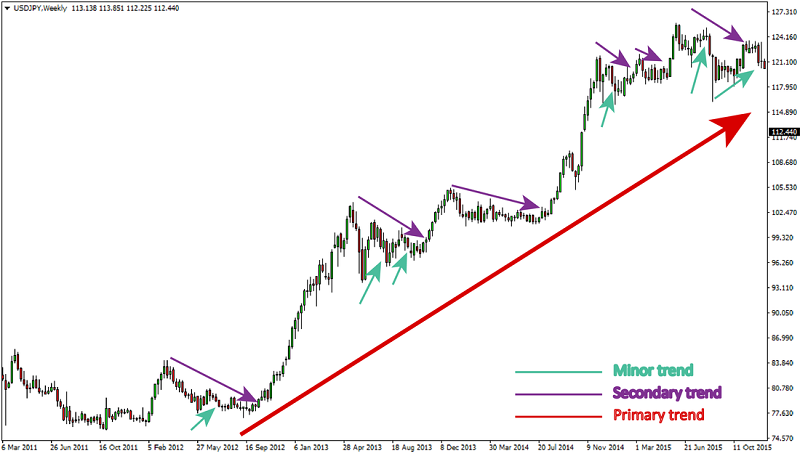The Dow Theory
Technical analysis is the base instrument for a trader. Although not all traders rely on technical indicators, we highly recommend combining different methods to get a higher profit.
So today we want to tell you how technical analysis appeared.
A “father” of the technical analysis is Charles Dow, who created the world famous Dow Jones Industrial Average Index together with Edward Jones. Moreover, he was a head editor in the Wall Street Journal where he was publishing his Technical Analysis from 1900 to 1902 as a series of articles. Later in 1932 Robert Rhea collected his works and published The Dow Theory.
Although technical analysis has developed, it is based on the Dow theory.
Let’s look at the basic tenets.
I. The price (average) discounts everything.
The main idea is that any factor that affects a price - economic, political, psychological - is already taken into consideration by a market and included in prices.
II. The market has three trends.
Firstly, it is worth to clarify what a “trend” is. Trend is the general direction of a market or a price. It can vary in length from short to intermediate, to long term.
- Primary trend. It is also known as a major trend. Talking about the duration, it is long-term, the effect can continue for more than 1 year. This trend can influence both other trends.For a trader, it is the most important trend. You should define the direction of it and trade according to it. Dow called it tides in the sea.
- Secondary trend. It is also assumed as a correction of the primary trend. The duration varies from three weeks to three months. So in a bullish market, it has a downward direction, in a bearish market, it is an upward movement. Charles Dow considered it as waves in the sea.
- The last one is a minor trend or “short swing”. It lasts from several hours to several weeks. It is a pullback of the secondary trend. It is believed that in this time period there is too much price noise, and looping on the slightest movements can lead to irrational trading decisions.

III. The market trends have three phases.
They are:
- Accumulation phase. It is a period of price consolidation. The market is hesitant, the previous trend is depleted. It is a good entry period (but risky).
- Absorption (mark up) phase. As soon as the direction is approved, the phase begins. It is the main and longest phase of a trend. There is the biggest price movement during it.
- Distribution phase. When signs of instability appear, most of the traders start closing positions. A price can continue to grow by inertia, despite the absence of explicit prerequisites for this. But at the end, it will fall.

IV. Volume must confirm the trend.
Dow assumed that volume should increase in the direction of the main trend. So while upward trend, the volume should grow with an increase in price. Vice versa, in major downward trend, volume should expand together with falling prices.
V. A trend is assumed to be in effect until it gives a definite signal of reversal.
Dow believed that trend remains until the specific signal of reversal appears.
The logic is: an upward trend is created when every next pick and dip are higher than previous ones. A downtrend, on the contrary, has decreasing peaks and dips. So an obvious signal for the upcoming reversal is the formation of a lower minimum within the upward movement. In the case of the downward trend, the situation is reversed.
There are other reversal signals such as resistance/support, price patterns, trend lines and moving averages.
Making a conclusion, we can say that although nowadays technical analysis and markets have developed, the Dow theory had a huge influence on them. Also, the idea of emotions in the marketplace still remains a characteristic of market trends. Furthermore, its aspects were incorporated into other theories, such as Elliott Wave theory. So we can say that the Dow theory played an enormous role in the trading theory.